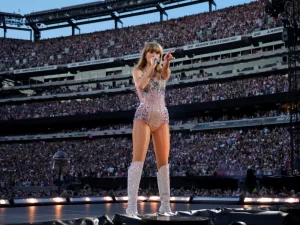How the T Serves CRLS Students
Students Reflect on Boston’s Transit System

Almost 50% of students are somewhat satisfied with the MBTA system.
November 30, 2019
The MBTA’s Red Line runs through the heart of Cambridge, linking the city’s universities, businesses, and people to one another and beyond. Bus routes are scattered across the city and surrounding areas, creating a web of public transit connecting the population of Eastern Massachusetts. Here in Cambridge, the system is especially important for CRLS students, as it gives them the independence to travel to school, work, and around the city.
Junior Zane Ghaemi commented on the system’s upsides: “The T is pretty efficient, and I can rely on it to get me to Boston and around without the overpriced costs of other transportation. It has remained a reliable way to travel even while being one of the oldest systems in the country.”
But many CRLS students also think the system is flawed. From derailments, to service delays, to constant maintenance work, the system seems to never be in working order.\
A survey conducted by the Register Forum found that about 46% of students commute to school using public transportation. The great majority of CRLS students responded that they were either “neutral” or “somewhat satisfied” with metro Boston’s public transit system. These results suggest that CRLS students at least appreciate the accessibility of the network. Despite this generally positive view of the system from students, other students have many grievances. The common reasons for these complaints included a lack of cleanliness as well as cost.
Sometimes it will be delayed, sometimes it’s really slow, sometimes I don’t want to deal with some of the people that are on it.
“I think it should be free for all students. Especially because some kids ride it every day,” said Nawal Ibrahim ’21. All CRLS students have access to reduced-fare Charlie Cards, and students with reduced-price or free school lunches receive M7 cards, which give students free rides on all MBTA transit during the school year.
Prices for riding the T rose six percent this year—standard train fares changed from $2.25 to $2.40—but there are also many proposals to make the MBTA free in the future. Ayanna Pressley, a congresswoman from Massachusetts, has advocated for making the MBTA fare-free to promote equity in Boston.
Cost is not the only problem with the system. When it comes to the functionality of the MBTA, students are particularly unhappy with the MBTA buses that connect much of Cambridge, including the 68 and 69 routes which stop at CRLS.
Carlos Moreno, a junior, said he doesn’t take the bus to school because “the 77 is always full and it’s never on time … I always come late if I take the 77.” Moreno instead takes the Red Line to school most days: “[the Red Line] is pretty consistent, but [the train] is just way too crowded.”
Some students choose other modes of transportation for their commute to school because they do not trust the MBTA. Terrell Anderson ’20, who rides his bike to school, said, “I can get on at Porter and go right to Harvard.” He chooses not to ride the T because “sometimes it will be delayed, sometimes it’s really slow, sometimes I don’t want to deal with some of the people that are on it.”
The state of Massachusetts is poised to begin a large-scale investment into renovating the T. Governor Charlie Baker stated that with a new $10 billion plan, the Commonwealth “will build on the foundation we established and accelerate efforts to make our transportation system safer, more reliable and more sustainable.” Although progress may be slow, plans to modernize the T are on the horizon, likely giving CRLS and Cambridge access to a modernized transit system.
This piece also appears in our November 2019 print edition.









